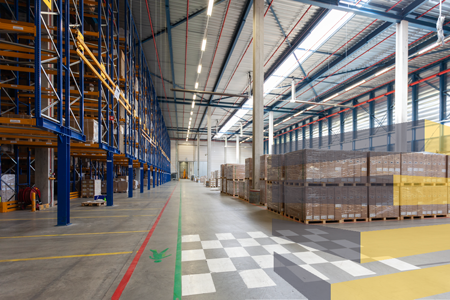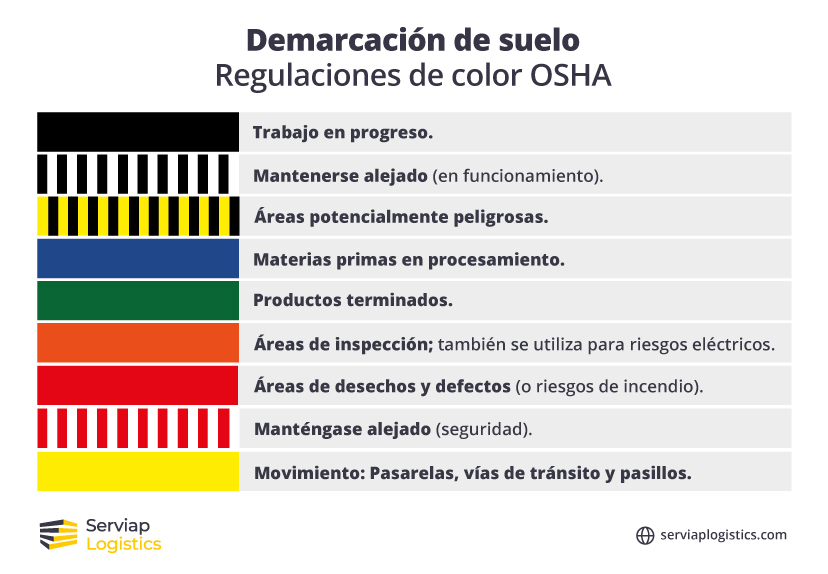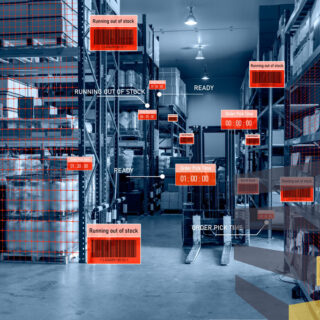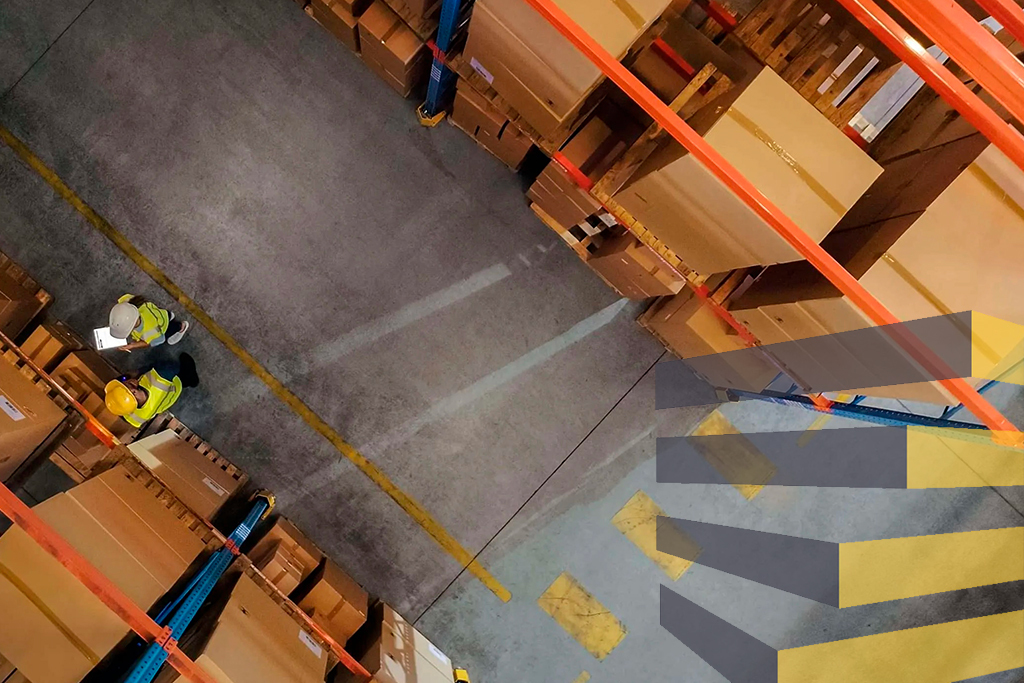Warehouse floor signage is necessary to maintain safety, best practices and high efficiency in the daily operations of a warehousing or distribution business.
Because warehouse floor markings indicate where people and machinery may or may not operate, as well as their direction of travel. In many countries, the colors and dimensions used for warehouse floor markings are closely regulated.
In the United States, the Occupational Safety and Health Administration (OSHA) oversees warehouse floor markings, among many other aspects of the workplace, so it is ideal to work with an OSHA-certified supplier. In the case of Mexico and Brazil, similar regulatory bodies are involved.
There are two main types of warehouse floor marking to choose from: taped or painted. The former is made with strong, durable adhesive tape, while painted marking uses epoxy paint. Either has great advantages. To make the best decision, it is best to consult with experts in warehouse project management.
If you are located in Brazil, Mexico or the United States, and you need someone to place warehouse floor signage, please contact us, contact us at.
Warehouse floor markings: key considerations
Warehouse floor markings often use lines or stripes to separate zones within the warehouse. It is a fundamental element in maintaining safety in the design of the warehouse layout.

These clear and easily visible stripes allow all users of the facility to know how the space should be organized and used, as well as contributing to warehouse safety measures. Typical functions of warehouse floor markings include:
- To delimit and mark different work areas.
- Provide clear direction for pedestrian traffic.
- Reinforce safety signs.
- To mark restricted or prohibited areas.
The first decision to make is to choose the material for your warehouse floor signage. The most common choices are tape or paint. They differ in durability and cost, but in both cases it is possible to make adjustments and redesigns after the fact.
There are several factors to consider when choosing the most suitable option, such as the type of flooring and the likelihood of markings being changed. Variables such as durability, strength and cost will influence the decision, and the most suitable warehouse flooring signage for certain types of warehouse may not be suitable for others.
The most common type of warehouse floor marking is an adhesive tape designed to be placed on the floor. They are usually made of very strong materials, such as vinyl. A big advantage is that it can be applied and used immediately. But it is also flexible, so it can be removed and reapplied with relative ease. Finally, it is cheaper to apply.
Epoxy paint for warehouse floor marking offers the most durable results. However, there are some significant differences from tape marking. This option is attractive and can withstand both wear and chemical cleaning. On the other hand, epoxy paint is more expensive to apply.
Size and colors of markings on the warehouse floor
Although the color will vary depending on the function of the marking, the sizing should be consistent. OSHA recommendations are for stripes to be between two and six inches wide, with four inches being the standard for warehouse floor markings.

The marking of warehouse floors contributes to the safety of people. The color of a stripe or box indicates what is happening or what may be in the area. Color codes can be flexible, although hazards should be marked in red or yellow.
For added emphasis, hazardous areas are often marked with alternating colors. All employees should be familiar with the color code, and guidelines should be available and clearly signed. The following colors are standard in most workplaces:
- Black: Work in progress
- Black/White: Keep clear (in operation)
- Black/Yellow: Potentially Hazardous Areas
- Blue: Raw materials for processing
- Green: Finished products
- Orange: Inspection areas; also used for electrical hazards.
- Red: Areas with scrap and defects; also used for fire hazards.
- Red/White: Stay away (safety)
- Yellow: For circulation: walkways, traffic lanes and corridors.
Country-specific regulations for warehouse floor markings
Brasil
In Brazil, the body responsible for regulation is the Secretariat of Labor Inspection, which reports to the Ministry of Labor and Employment and is in charge of enforcing legal regulations. The regulatory norms (NR), correspond to the obligations and duties that employers are obliged to comply with to ensure the safety and health of workers in the workplace. These regulatory standards are based on Law No. 6,514.
México
In Mexico, the Secretaría del Trabajo y Previsión Social (STPS) is the agency in charge of developing the country’s safety regulations. Regarding workplace regulations, the Mexican Official Standard NOM-003-SEGOB-2011, signs and notices for civil protection, establishes a series of rules to be followed in the use of colors, shapes and symbols in workplaces to prevent risks to workers.
USA

In the United States, the agency responsible for warehouse floor marking regulations is the Occupational Safety and Health Administration(OSHA), which is part of the Department of Labor.
OSHA is responsible for ensuring that all workers operate in a safe and healthful environment. OSHA regulations cover a wide range of issues, related to specific elements of the facility, such as the colors and dimensions of warehouse floor markings.
Serviap Logistics can help you with your warehouse setup
At Serviap Logistics we supply and install warehouse elements in Brazil, Mexico and the United States.
These include warehouse racking, labels, warehouse signage, floor signage and warehouse collision protection. We also offer project management services and can oversee the installation, remodeling or relocation of a warehouse from start to finish.
We count some of the world’s largest companies among our satisfied customers and partners, covering a wide range of industries such as automotive, e-commerce, wholesale and others.
As a family business that has grown internationally after starting in Mexico, we are committed to service excellence and pride ourselves in offering personalized service to every customer.
We are also dedicated to maintaining the highest safety standards wherever we operate, including OSHA certification in the United States.
Contact us at for more information on how we can help you with warehouse floor signage.
If you were interested in this article, check out the rest of our coverage.








